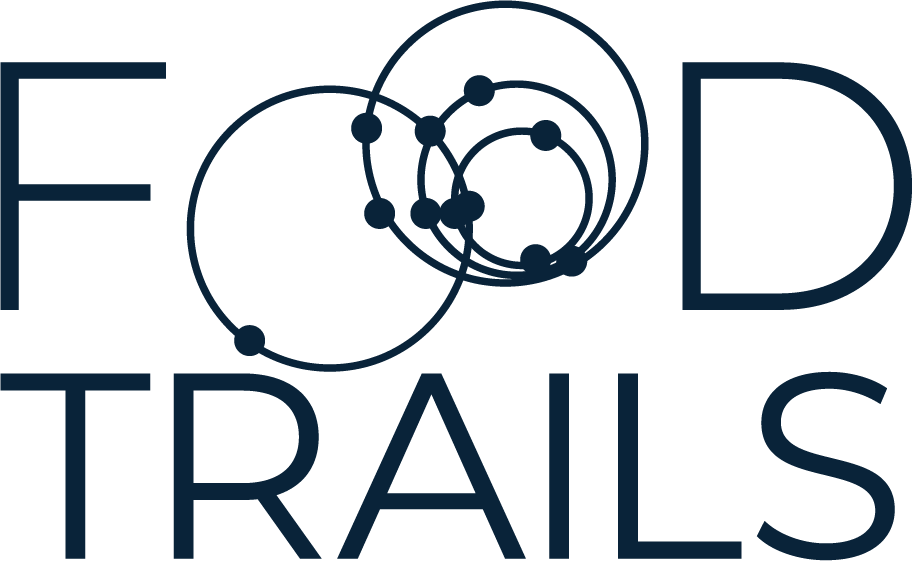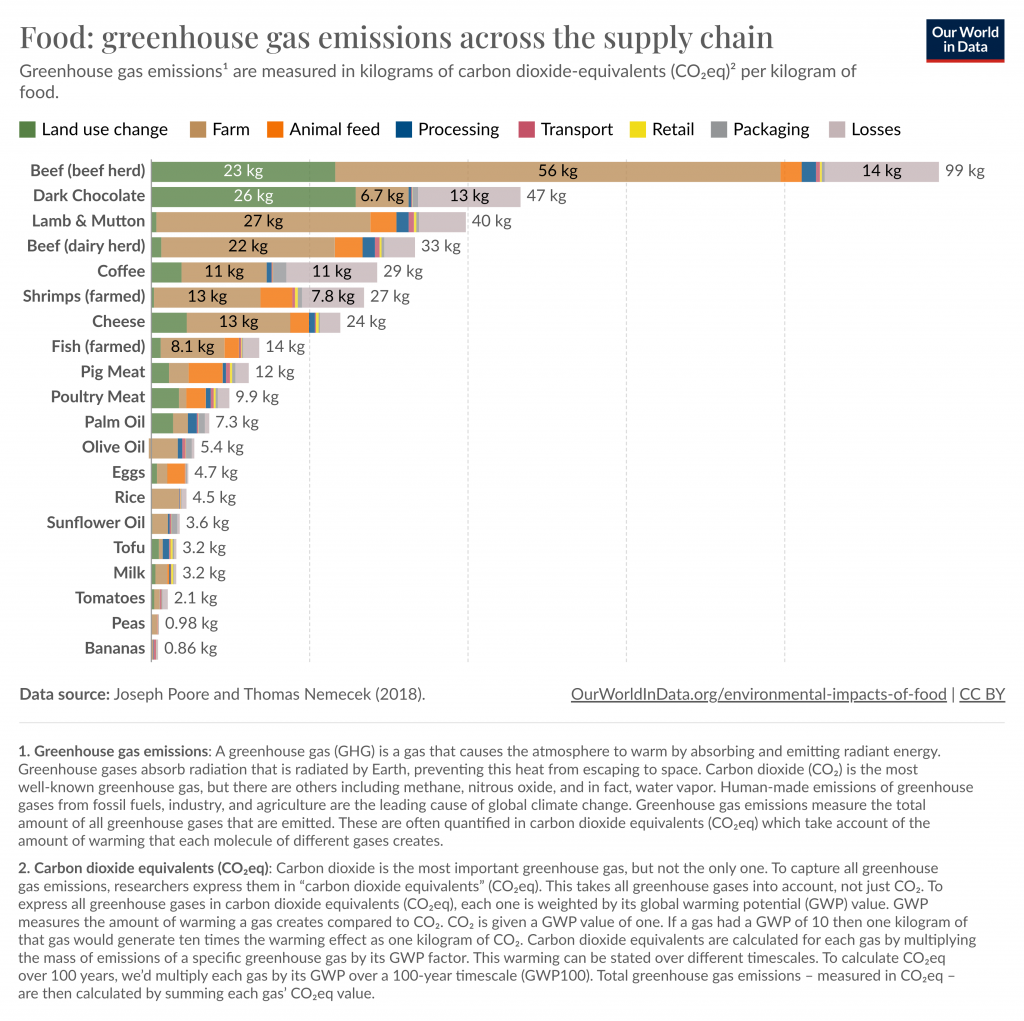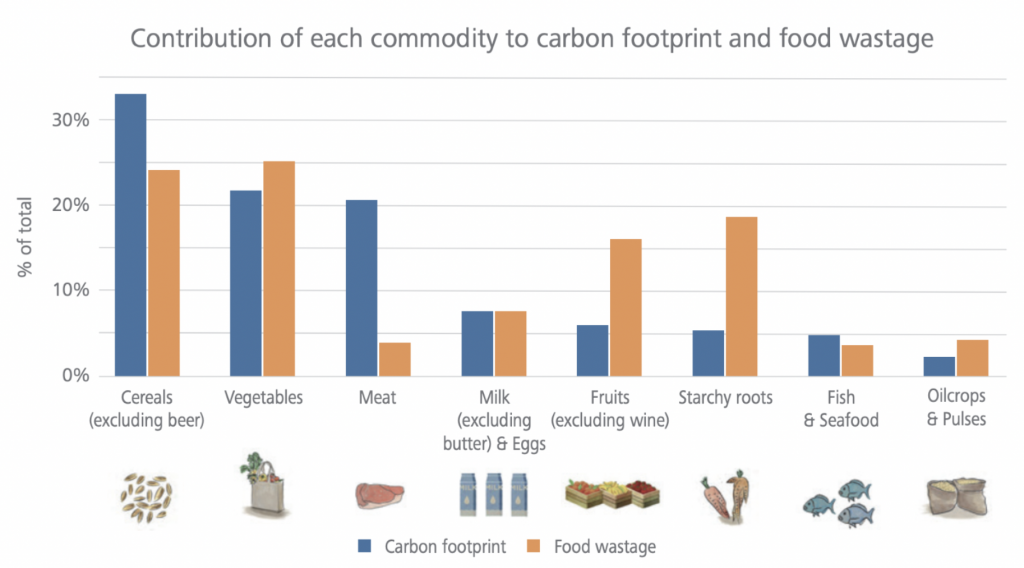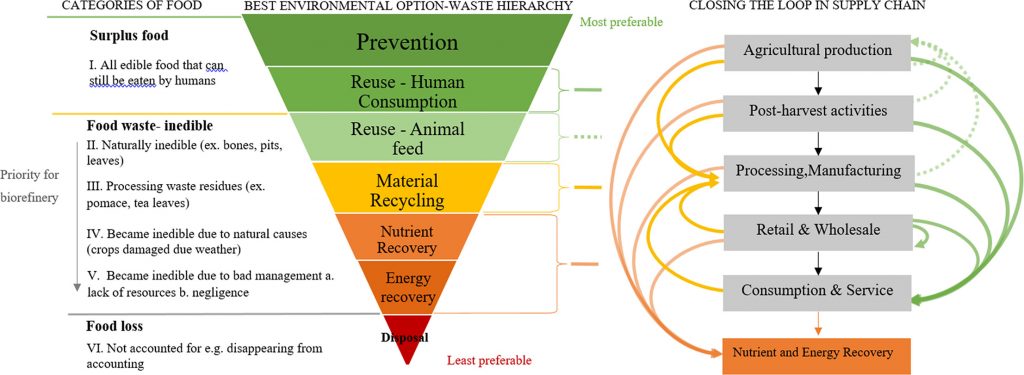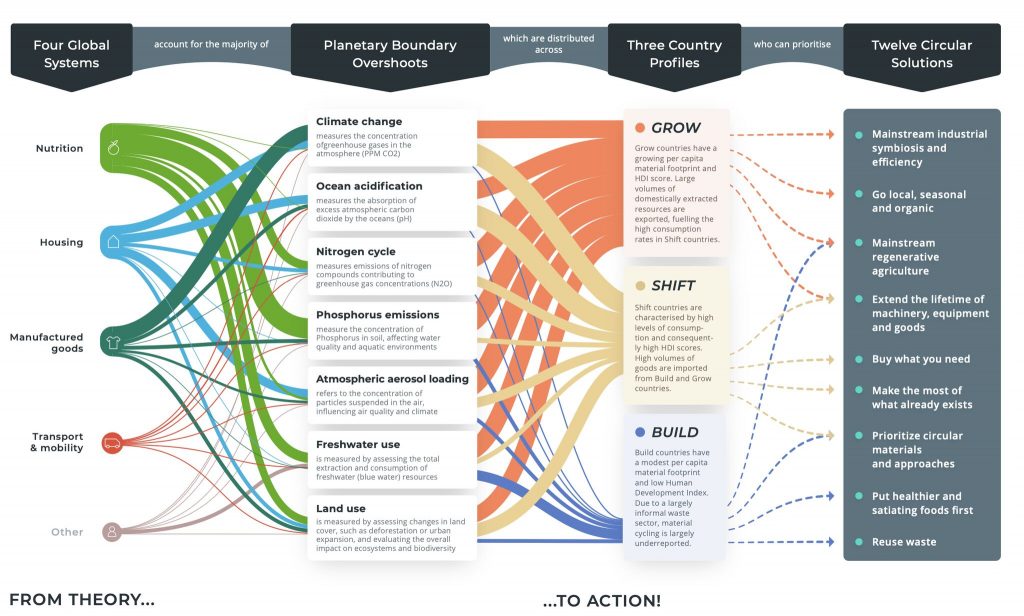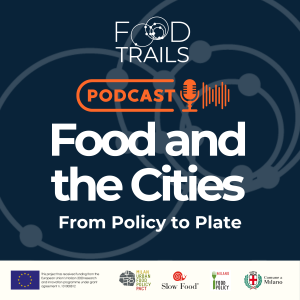Exploring Urban Food Challenges with Food Trails’ Crosscutting Managers
Welcome to the second articles of our series dedicated to raising awareness and understanding of the primary challenges related to sustainable urban food systems transformation.
We will examine these challenges through the lens of the 4 pillars of the EU Food 2030 strategy, leveraging the expertise of the Food Trails vertical expert on this topics, the Crosscutting Managers (CCMs).
After the overview of the Nutrition pillar, today we continue with an article on circularity by Alice Casiraghi.
City food systems are complex organisms with many moving parts that a food policy is designed to coordinate. The broad topic of circularity, resource efficiency, and food waste reduction has been identified as one of the four Food2030 priorities to achieve sustainable food systems in the European Union. How do we evaluate the circularity of a food system?
If we imagine inscribing the food system in a matrix and want to understand its level of circularity, there are two main ways we can use to run our analysis. We could break down a food system in ‘vertical segments’, the main steps of the food value chain, from farm to fork, or we could do so ‘horizontally’, by knowledge domains or crosscutting operations, from governance to regulations, education, finance, partnerships, and data collection. There is no clear recipe for circularity, it all comes down to the ability to analyse those different parts and then understand the possible links between them: circularity entails collaboration, creativity and going beyond siloed processes.
At the very basic level, to make a food system circular we need:
- To reduce waste along each step of the value chain, through education, regulations on food waste prevention, and better practices in the industry;
- To repurpose waste in the most effective way, evaluating case by case, whether we talk about food loss in production, processing waste in factories, food about to expire at the distribution stage, cooked or raw food at the consumption phase;
- To regenerate natural systems along each step of the value chain, allowing the food supply chain to work along the ecosystem, not against it, essentially reducing pollution to the minimum and serving waste or value chain externalities back to nature in a way the ecosystem can digest it without being overwhelmed.
The challenge to achieve circularity is to be able to expand the perspective to what is around the tasks we can directly manage.
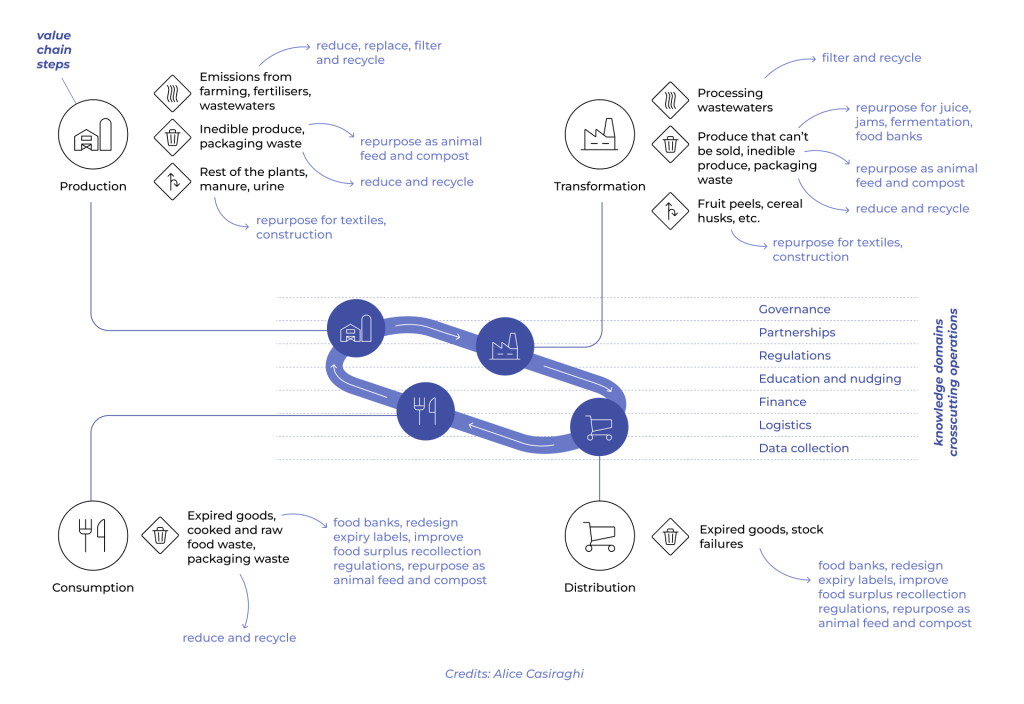
A broad analysis of the value chain and its stakeholders
The statistics about food waste and loss are dire: according to the World Food Programme “One-third of food produced for human consumption is lost or wasted globally. This amounts to about 1.3 billion tons per year, worth approximately US$1 trillion.” This food could suffice to feed more than the entirety of undernourished people in the world, but when it is wasted it becomes a harmful pollutant for the planet: if wasted food were a country, it would be the third-largest producer of carbon dioxide in the world, after the USA and China.
Food waste occurs at all stages of the value chain: in developed countries more than 40% of it occurs at the consumption stage, while in developing countries more than 40% occurs at the post-harvest stage, where poor storage facilities lead to pest infestations and mould ruining crops.
In these decades of globalisation, the food we eat in cities comes from all over the world and because of this it is important that a circular analysis involves the whole food value chain, beyond what occurs within the city premises. While we tend to consider circularity in city food systems as reducing food waste at the table and redistributing food surplus, the picture we can paint is broader than we might think, extending beyond the geographical borders of a city and beyond the food sector alone.
At the production stage, it starts with the processes of harvesting and farming, where more sustainable farming practices can be introduced to reduce waste by design: consociation of different food crops reduce the use of land, agricultural or farming land can be integrated with solar farms for the same purpose, silvopasture can allow farmers to preserve forests while breeding animals. Biodiversity, seasonality and new technologies in food production can reduce waste in transportation, in the use of fertilisers, and emissions from waste. Food waste and animal and human excreta can be used as alternatives to fossil fuel-based fertiliser [1], waste waters can be treated for reuse in closed loops.
Use of land and farming practices are the biggest causes for greenhouse gas emissions in food systems, and reducing waste and inefficiencies at those levels is an important step towards circularity that can engage other sectors beyond the food system: construction, energy, textiles, water cycles, fertilisers production.
Globally, we use every year 1.7 times the resources that are available to humanity on this finite planet [2], so the key question is how can we become two times more efficient? By bringing circularity in the equation, we can consume better and less, reduce waste in production, use the same resource twice or more, or for multiple purposes.
Rice husks, a byproduct of rice harvest which is a staple all over the world, can be used as a construction material, replacing more polluting ingredients that would need to be produced on purpose somewhere else. At the production stage, we can engage with creativity and an opportunity mindset to increase efficiency and circularity in a way that is respectful for humans and the planet at the same time. For food policy officers, it is important to interact with local food producers, learn from their hurdles, and support them in the process of understanding the challenges of climate change and the opportunities of a circular economy in their work.
It is worth to mention that meat consumption has a disproportionate impact on the use of land – because of the amount of land required for animal grazing and to produce feed for intensive cattle farming – and on the use of water – necessary for the irrigation of animal feed crops and to quench animals. In addition to this, the impact of food waste in terms of total weight and associated greenhouse gas emissions is higher when we waste meat rather than vegetables [4]. Reducing meat consumption to the levels suggested by diets such as the EAT Planetary Health Diet [5], designed to be healthy for both people and planet, can improve circularity in the food system.
Moving beyond food production, the further stages of transformation, distribution and consumption are usually the most familiar to city food officers. The food surplus and waste that occurs in the distribution and consumption phases, whether in a transportation lorry, a cargo ship, a wholesale market, a supermarket, restaurant or household, should be repurposed for human consumption first, according to the food recovery hierarchy diagram for a circular economy in food systems [5]. This can be done via discounting food about to expire, repurposing ugly food into jams, chips and sauces, or connecting with food banks for surplus redistribution.
Education of food professionals and consumers to understand food expiry labels and policies to make expiry labels easier to understand are other important actions that food policy officers can undertake to reduce food waste in cities.
Food that has rotten, has been partly eaten, or has been contaminated – for safety reasons – should instead be considered as input for other types of rescues: animal consumption, composting, production of biogas or materials for other industries. Other types of waste associated with these stages are: wastewater, energy inefficiencies, and overpackaging. All those externalities can be reduced or reused across other industries, or through better design of products and services associated with food consumption.
There are certain types of food waste after consumption, for example the leftovers from brewing hot beverages – coffee, tea – that could be repurposed to produce other foods – such as mushrooms. While these kinds of operations might not be a direct competence of a city food policy, city officers could educate food system operators and citizens to reduce food waste through such circular practices.
The interconnections between various knowledge domains in a circular food system
If we evaluate now the food system by knowledge domains, or using the ‘horizontal’ lens, we see how multiple roles within the local public administration in charge of the food policy and across the private sector need to come together to achieve circularity in food systems.
Governance plays an essential role in nudging the system towards circularity: a solid food policy and strategy at the local level can bring together a multitude of stakeholders to analyse, measure and improve the food system through consultations, regulations and procurement practices. Stakeholders often include: the food bank, local food NGOs, food distributors, farmers and representatives of the HoReCa sector. The amount and quality of data collected from all the stakeholders can greatly improve the control of food production and waste flows, and allow policy officers to intervene to tackle opportunities and pain points effectively.
It is important that, at a mature stage of a city food strategy, circular economy interventions are coordinated with other departments such as waste management, agriculture, greenery and land development, as one departments’ waste can become one other’s resource. Lastly, a key competence in circular food systems is logistics: if nothing becomes waste in a circular system, the resources that are not useful at a certain stage of the value chain need to be directed towards other stakeholders that can make good use of them.
The liability continuum across the value chain introduced by the concept of circularity entails the need for a reverse logistics system: resources don’t just move in one direction from production to consumption to waste, but they are constantly looped in multiple directions, in a continuous exchange between actors who discard something they don’t need in favour of others who might need it, and actors who need resources that have been discarded by others. This assumption is valid whether the resource is food waste, discarded plastic packaging, manure, agricultural byproduct, wastewater, etc.
The work that city food policies do in collecting data, shifting regulations, and connecting food producers, distributors and consumers with food banks and waste recollection systems is essential to achieve core circular operations within city food systems. Building consensus, educating citizens and food professionals, and writing procurement contracts are some of the most delicate and time-consuming processes in building a sustainable food system.
In a long-term perspective, circular efforts in the food system can become even more ambitious, aiming to enlarge the perspective to the bigger picture, with the creativity to imagine a new type of economy-ecology that transcends siloes, areas of expertise and industrial sectors.
Food Trails Crosscutting Managers
Within the Food Trails Project, four vertical expert, the Crosscutting Managers, worked to support the 11 partner cities in the development of their living labs and pilot actions, ensuring they adopt a systemic approach. Each of them represent a pillars of the EU Food 2030 strategy: Climate, Communities, Circularity and Nutrition. The CCM have been visiting all the 11 Food Trails cities multiple times to support and see the progress in systemic food system transformation.
The author: Alice Casiraghi, Food Trails’s Croscutting Managers on Circularity, is a freelance designer by training and her expertise is in circular economy. She helps cities and businesses transition towards a circular model, reduce waste, identify opportunities to repurpose byproducts or plan new circular value chains without waste.
References
[1] Circularity in Europe strengthens the sustainability of the global food system https://www.nature.com/articles/s43016-023-00734-9
[2] How many Earths? How many countries? https://overshoot.footprintnetwork.org/how-many-earths-or-countries-do-we-need/
[3] Towards transparent valorization of food surplus, waste and loss: Clarifying definitions, food waste hierarchy, and role in the circular economy https://www.sciencedirect.com/science/article/abs/pii/S0048969719360292
[4] Comparison of Plate Waste between Vegetarian and Meat-Containing Meals in a Hospital Setting: Environmental and Nutritional Considerations https://www.ncbi.nlm.nih.gov/pmc/articles/PMC8950210/
[5] The Planetary Health Diet https://eatforum.org/eat-lancet-commission/the-planetary-health-diet-and-you/
